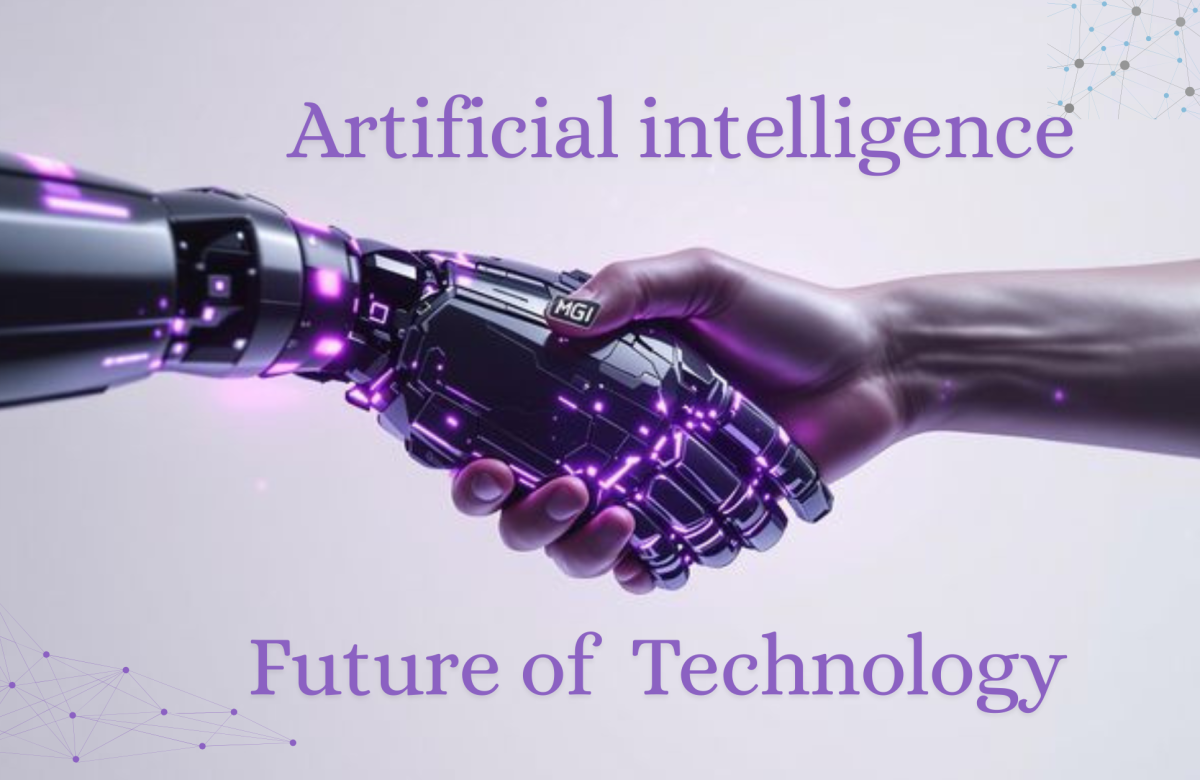Introduction
Artificial Intelligence (AI) has evolved from a futuristic idea to a necessary component of our daily existence. AI is changing industries all over the world, from voice assistants like Siri and Alexa to cutting-edge applications in healthcare, finance, and education. As AI develops further in 2025, it will provide more intelligent automation, profound insights, and interactions that resemble those of a human. This blog examines the value, uses, resources, difficulties, and prospects of artificial intelligence in the current digital era.
What is Artificial Intelligence?
Artificial Intelligence refers to the simulation of human intelligence in machines that are programmed to think, learn, and make decisions. It encompasses fields like:
-
Machine Learning (ML): Training machines to learn from data.
-
Natural Language Processing (NLP): Understanding and processing human language.
-
Computer Vision: Enabling machines to interpret visual data.
-
Robotics: Building intelligent machines capable of physical tasks.
AI is not just about automation—it’s about making technology more adaptive and intelligent.
Why AI Matters Today
-
Efficiency: Automates repetitive tasks, saving time and resources.
-
Data-Driven Insights: Helps businesses analyze vast amounts of data.
-
Personalization: Powers recommendation engines like Netflix and Amazon.
-
Innovation: Enables breakthroughs in healthcare, climate science, and engineering.
-
Competitive Advantage: Companies using AI outperform those relying solely on traditional methods.
Key Applications of AI in 2025
1. Healthcare
AI assists in diagnostics, drug discovery, and personalized treatment plans. Algorithms can analyze medical images faster than humans, detecting diseases like cancer at early stages.
2. Finance
Banks and fintech platforms use AI for fraud detection, credit scoring, and algorithmic trading. Chatbots also enhance customer support by providing 24/7 assistance.
3. Education
AI-driven platforms personalize learning experiences, adjusting difficulty based on student performance. Virtual tutors and grading systems reduce workload for teachers.
4. E-Commerce
Recommendation systems powered by AI suggest products, increasing sales and customer satisfaction. AI chatbots also handle customer queries instantly.
5. Transportation
Self-driving cars and AI-powered traffic management systems are shaping the future of smart cities. AI improves safety and efficiency in logistics and supply chain management.
Tools and Technologies Driving AI
-
TensorFlow & PyTorch: Popular frameworks for building machine learning models.
-
OpenAI Models: Used for natural language tasks, chatbots, and creative solutions.
-
Google Cloud AI & AWS AI: Cloud-based services for scalable AI solutions.
-
Scikit-learn: A Python library for data analysis and ML.
-
Keras: High-level API for neural networks.
These tools make AI development more accessible to businesses and researchers.
The Role of AI in Everyday Life
AI has quietly integrated into daily routines:
-
Voice Assistants: Siri, Alexa, and Google Assistant.
-
Smart Homes: Thermostats, cameras, and lighting systems powered by AI.
-
Social Media: AI curates feeds, detects harmful content, and recommends connections.
-
Entertainment: AI creates personalized playlists, video recommendations, and even original art.
AI is no longer optional—it’s embedded in how we live, work, and connect.
Ethical Considerations in AI
As AI grows, so do ethical concerns:
-
Bias and Fairness: AI models can reflect human biases if trained on flawed data.
-
Privacy: AI systems handle vast amounts of personal data, raising concerns about misuse.
-
Job Displacement: Automation may replace certain roles, requiring upskilling.
-
Decision Transparency: Black-box AI models make decisions without clear explanations.
Responsible AI requires balancing innovation with fairness, accountability, and transparency.
Challenges Facing AI Development
-
Data Dependency: AI relies on high-quality data, which is often scarce or unstructured.
-
High Costs: Building and maintaining AI systems requires significant resources.
-
Regulatory Uncertainty: Governments are still developing frameworks for AI governance.
-
Security Risks: Malicious actors may misuse AI for cyberattacks or misinformation.
Overcoming these challenges will determine how far AI can truly go.
Future Trends in AI
1. Generative AI
AI models that create text, images, music, and video are gaining massive traction. Businesses use generative AI for content creation, marketing, and design.
2. AI in Climate Solutions
AI is being used to predict weather patterns, optimize energy use, and reduce carbon footprints, supporting sustainability efforts.
3. Human-AI Collaboration
Rather than replacing humans, AI will increasingly work alongside people, enhancing creativity and decision-making.
4. AI-Powered Cybersecurity
AI tools will detect and respond to cyber threats faster than humans, making systems safer.
5. Edge AI
Running AI models directly on devices (like smartphones and IoT devices) without relying on the cloud will improve speed and privacy.
The Business Impact of AI
AI adoption leads to measurable benefits:
-
Cost Savings: Automates tasks and reduces human error.
-
Revenue Growth: Personalized recommendations and smarter marketing boost sales.
-
Innovation: Opens new opportunities in product development.
-
Global Competitiveness: Nations and companies investing in AI lead in digital transformation.
According to market reports, the global AI industry is projected to surpass $1 trillion by 2030, with 2025 being a pivotal year for adoption.
AI in Healthcare Innovation
Beyond diagnostics, AI is revolutionizing healthcare by:
-
Predicting disease outbreaks through data analysis
-
Supporting robotic surgeries with precision
-
Developing personalized medicine based on genetic data
-
Enhancing mental health support with AI-driven therapy chatbots
This ensures faster, more accurate, and cost-effective healthcare.
AI and the Future of Work
AI is transforming workplaces by automating routine tasks while enabling employees to focus on creative and strategic work. Remote collaboration tools, virtual assistants, and AI-driven HR systems are already streamlining operations. The future workforce will require AI literacy and digital skills.
AI for Small Businesses and Startups
AI is no longer limited to tech giants. Affordable tools allow small businesses to:
-
Automate customer support with chatbots
-
Use AI for marketing and ad targeting
-
Analyze sales data for smarter decisions
-
Improve inventory management
This levels the playing field for startups and smaller enterprises.
Government and AI Regulations
As AI expands, governments worldwide are working on regulations to ensure ethical and safe use. Focus areas include:
-
Protecting user data
-
Preventing AI misuse
-
Ensuring transparency in AI decisions
-
Encouraging innovation while setting boundaries
Balanced regulation will play a key role in shaping the responsible growth of AI.
Conclusion
Artificial Intelligence is reshaping every aspect of our world—from healthcare and finance to entertainment and education. While challenges like bias, regulation, and security remain, AI’s potential to enhance productivity, personalize experiences, and solve global challenges is undeniable.
In 2025 and beyond, AI will move closer to becoming a trusted partner for humanity. The future lies not in machines replacing people but in humans and AI working together to build smarter, more inclusive, and sustainable solutions.








